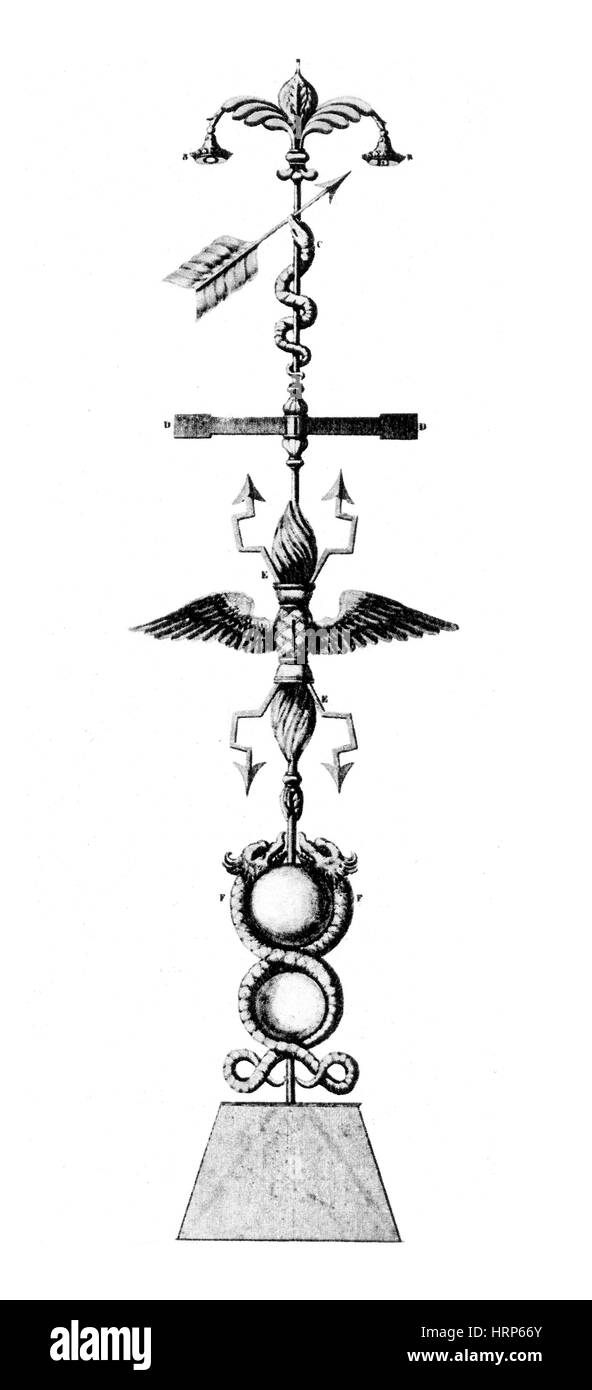Benjamin Franklin Lightning Rod, 1752

Image details
Contributor:
Science History Images / Alamy Stock PhotoImage ID:
HRP66YFile size:
35.9 MB (733.2 KB Compressed download)Releases:
Model - no | Property - noDo I need a release?Dimensions:
2391 x 5250 px | 20.2 x 44.5 cm | 8 x 17.5 inches | 300dpiPhotographer:
Photo ResearchersMore information:
This image could have imperfections as it’s either historical or reportage.
The pointed lightning rod conductor, also called a lightning attractor or Franklin rod, was invented by Benjamin Franklin in 1749. He noted that conductors with a sharp rather than a smooth point could discharge silently, and at a far greater distance. He surmised that this could help protect buildings from lightning by attaching "upright Rods of Iron, made sharp as a Needle and gilt to prevent Rusting, and from the Foot of those Rods a Wire down the outside of the Building into the Ground; ... Would not these pointed Rods probably draw the Electrical Fire silently out of a Cloud before it came nigh enough to strike, and thereby secure us from that most sudden and terrible Mischief!" Following a series of experiments on Franklin's own house, lightning rods were installed on the Academy of Philadelphia (University of Pennsylvania) and the Pennsylvania State House (Independence Hall) in 1752.